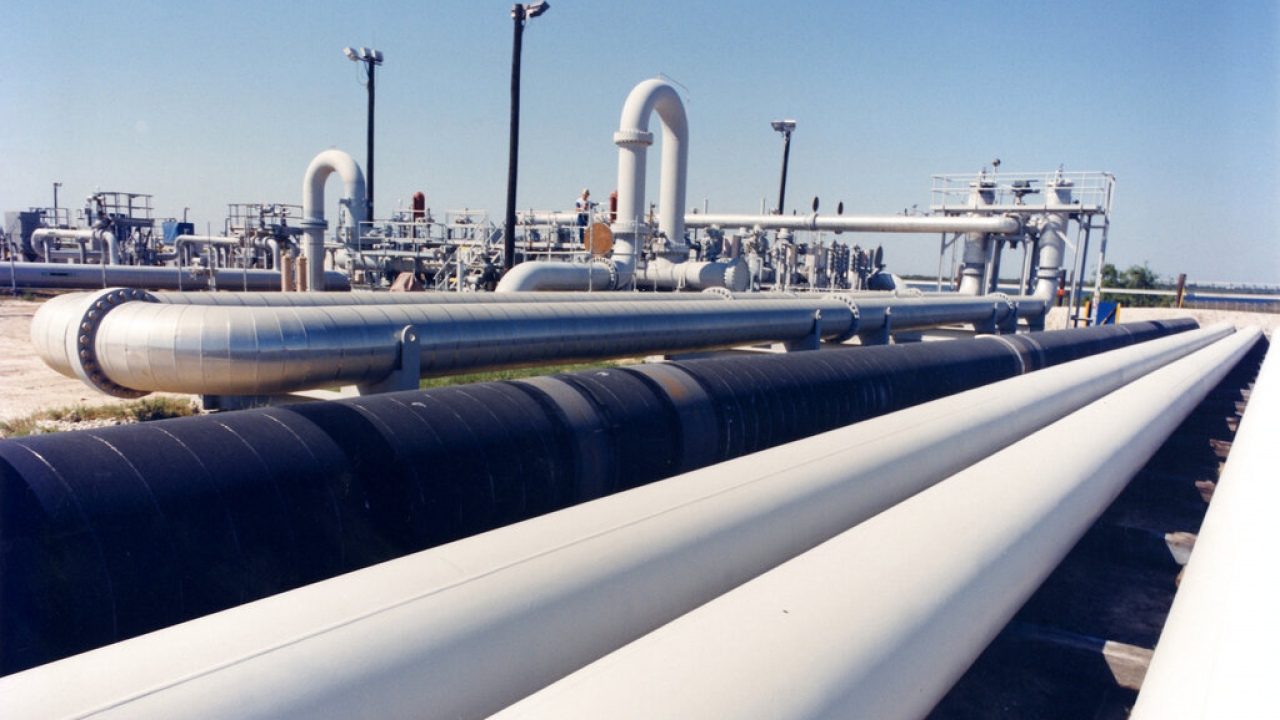The United States' Strategic Petroleum Reserve is at its lowest level in 40 years as its supply continues to dwindle.
The U.S. tapped into its oil reserve in 2022 when gas prices reached $5 a gallon, and the price of a barrel of oil exceeded $100 a barrel. But even months after the price of oil subsided to more normal levels, the oil reserve continued to decline, albeit at slower rates.
As of June 30, the reserve had 347 million barrels of oil. The U.S. started the year with about 373 million barrels.
But the supply is far lower than when the U.S. had about 638 million stockpiled at the start of 2021.
The supply has declined this year due to the passage of the Bipartisan Budget Act of 2015. The law signed by President Barack Obama with the help of a Republican-led Congress required the sale of 58 million barrels of oil through 2025.
Earlier this year, the Department of Energy agreed to sell 26 million barrels from the stockpile this year.
Why is there a stockpile?
The Strategic Petroleum Reserve has been used in times of national emergency to prevent U.S. oil levels from dipping. Drawdowns have been ordered after hurricanes struck the Gulf Coast and major refineries were forced to close.
When the U.S. draws down its oil supply, it sells the petroleum through an open auction. If the U.S. buys the oil at low market rates and sells it when prices are higher, the government can draw revenue from these sales.
Last year, 180 million gallons of the stockpile were released in an effort to reduce gas prices. According to the Department of Energy, the U.S. consumes about 19.7 million barrels of oil a day. About 8.7 million barrels are used for gasoline.
Patrick De Haan, who analyzes gas price trends for Gas Buddy, said last year's release likely resulted in a 5%-15% reduction in oil prices. But he said giving an exact figure is a challenge.
"I think if anything, the Russia situation has shown us that the SPR is highly valued," De Haan said. "It's been sitting there for 50 years and this is really the first time that there's been a critical imbalance in markets. The price of oil prior to Russia's invasion of Ukraine was $70 and it nearly doubled in the period of a month."
De Haan noted that past presidents, including Obama and Donald Trump, have discussed reducing the Strategic Petroleum Reserve's stockpile. But the reserve acts as a sort of insurance policy in case of major disruptions to the global oil supply.
"I think the best insurance policy would be one in which the SPR goes to its maximum capacity, which is somewhere in the ballpark of 700 to 750 million barrels," De Haan said.
What is the future of the stockpile?
Last week, the Department of Energy announced that the U.S. is purchasing an additional 6 million barrels of oil. In total, the U.S. plans to add about 12 million barrels of oil to the stockpile starting in August.
Earlier in the summer, the Biden administration purchased 6.3 million barrels of oil at a rate of $72.67 per barrel. The Biden administration said it sold oil at $95 per barrel during last year's drawdown.
The Department of Energy has not responded to multiple requests for comment. In October 2022, the Biden administration said it planned to begin replenishing the U.S. stockpile when oil prices reached around $67-$72 a barrel.
De Haan said it would be irresponsible for the Biden administration to try and replenish the U.S. stockpile all at once.
"It's not like you just walk into Home Depot and buy 200 million barrels," De Haan said. "You piece it together in order to prevent the market from spiking. If somebody comes out and buys 200 million barrels, that's gonna send prices up. Just like somebody buying $200 million worth of Apple stock. So this is gonna be something that's slow."
But how quickly the U.S. should replenish its supply depends on several factors.
"That's really contingent on the Saudis and the Russians who have been trying to cut supply in an effort to boost prices," De Haan said. "That strategy has seen mixed success, but it's clear to me that the administration does intend to begin the process of refilling the SPR, and hopefully it becomes something more significant."







